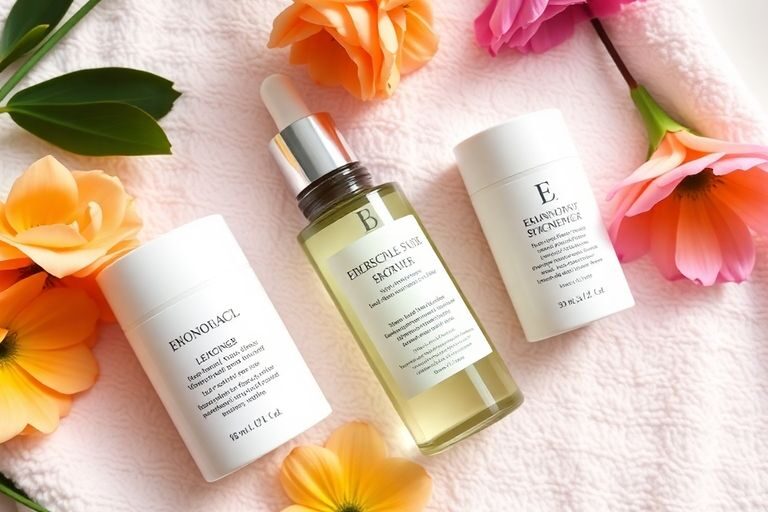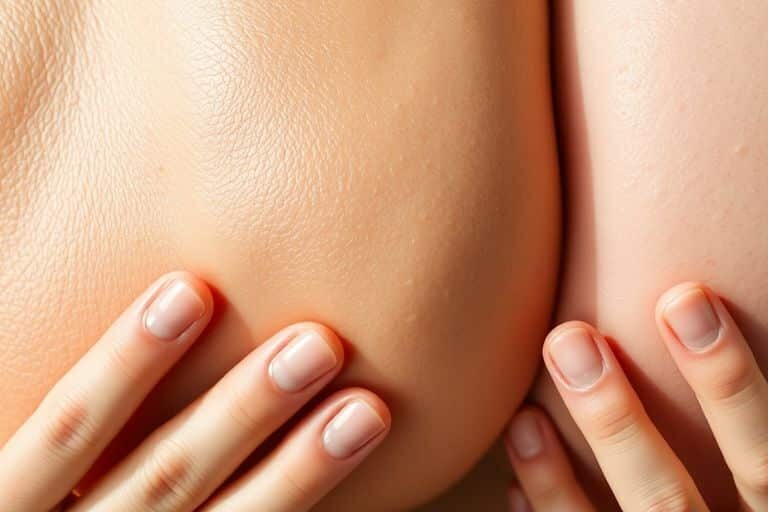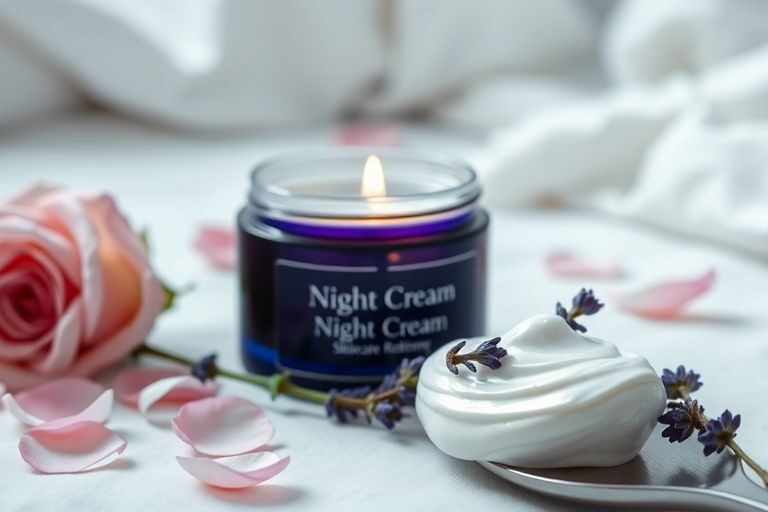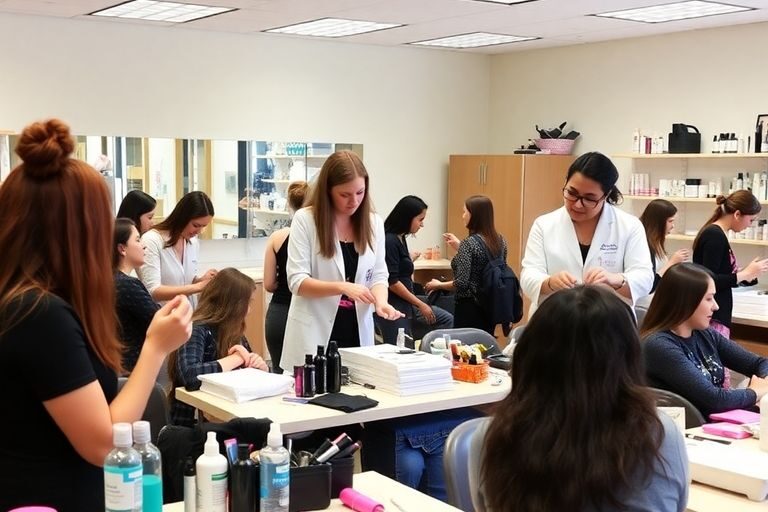Skincare can feel like a bit of a minefield with all the products and advice out there. But don’t worry, you don’t need to be a beauty guru to take care of your skin. Following a few essential skincare steps every day can make a big difference. This guide will help you understand the basics of a good skincare routine, tailored to your unique skin type and needs.
Key Takeaways
- Identify your skin type to tailor your routine effectively.
- Cleansing is vital; choose a gentle cleanser that suits your skin.
- Exfoliate regularly to keep your skin fresh and clear.
- Use a toner to balance your skin after cleansing.
- Never skip sunscreen to protect your skin from harmful UV rays.
Understanding Your Skin Type
Before diving into any skincare routine, it’s really important to understand your skin type. What works wonders for one person might not do much for another, or worse, could even cause irritation. I’ve learned this the hard way through trying out all sorts of products over the years. Knowing your skin type is the first step to creating a routine that actually works for you.
Identifying Skin Types
There are generally five main skin types: oily, dry, combination, normal, and sensitive. Here’s a quick rundown:
- Oily Skin: This type tends to have a shiny appearance, with visible pores. You might find you’re prone to breakouts.
- Dry Skin: Dry skin often feels tight, and can sometimes be flaky. It might look dull and feel itchy.
- Combination Skin: As the name suggests, this is a mix of oily and dry areas. Usually, the T-zone (forehead, nose, and chin) is oily, while the cheeks are dry.
- Normal Skin: This is pretty balanced – not too oily, not too dry. Pores are usually small, and there are few imperfections.
- Sensitive Skin: Sensitive skin is easily irritated. It can react to certain products with redness, itching, or burning.
A simple test I often recommend is washing your face and waiting an hour. Then, blot your face with a tissue. If the tissue comes away clean, you likely have dry or normal skin. If it’s oily, you probably have oily or combination skin. If your skin feels tight or irritated, it’s likely sensitive.
Common Skin Concerns
Beyond just skin type, we all have specific skin concerns we want to address. These can include:
- Acne: Spots, blackheads, and whiteheads. Can be caused by excess oil, bacteria, and hormones.
- Ageing: Fine lines, wrinkles, and loss of elasticity. These are natural, but can be minimised with the right care.
- Hyperpigmentation: Dark spots or uneven skin tone. Can be caused by sun damage, acne, or hormones.
- Redness: Rosacea, eczema, or general sensitivity can cause redness.
- Dehydration: Skin lacks water, leading to dullness and fine lines. This can affect any skin type.
Tailoring Your Routine
Once you’ve identified your skin type and any specific concerns, you can start tailoring your skincare routine. This means choosing products that are formulated for your skin’s needs. For example, if you have oily skin, you’ll want to look for oil-free and non-comedogenic products. If you have dry skin, you’ll need hydrating and moisturising ingredients. For sensitive skin, fragrance-free and hypoallergenic options are best. Understanding skin types is the first step to a great routine.
It might take some trial and error to find what works best for you, but it’s worth the effort. Remember, consistency is key! Once you’ve found a routine that suits your skin, stick with it to see the best results.
The Importance of Cleansing
Okay, so cleansing. It might seem obvious, but honestly, it’s the bedrock of any good skincare routine. You can slather on all the fancy serums and moisturisers you want, but if you’re not starting with a clean base, you’re basically wasting your time (and money!). Think of it like painting – you wouldn’t paint a wall without prepping it first, would you? Same goes for your face.
Choosing the Right Cleanser
Finding the right cleanser can feel like a mission, but it’s worth the effort. The goal is to remove dirt, oil, and makeup without stripping your skin of its natural moisture. I’ve definitely been there, using cleansers that left my face feeling tight and dry – not a good look, or feeling! Here’s a quick guide:
- For dry skin: Look for creamy, hydrating cleansers. Ingredients like hyaluronic acid and glycerin are your friends.
- For oily skin: Gel or foaming cleansers can help control excess oil. Salicylic acid can be a good shout too.
- For sensitive skin: Opt for fragrance-free, gentle cleansers. Micellar water is often a safe bet.
- For combination skin: This can be tricky, but a gentle, balanced cleanser usually works. You might need to experiment a bit.
Cleansing Techniques
It’s not just about what you use, but how you use it. Here’s my go-to cleansing technique:
- Wet your face with lukewarm water. Hot water can be too harsh.
- Apply a small amount of cleanser to your fingertips.
- Massage gently in circular motions for about 30-60 seconds. Don’t forget your hairline and neck!
- Rinse thoroughly with lukewarm water.
- Pat your face dry with a clean towel. Avoid rubbing, as this can irritate your skin.
I always make sure to double cleanse at night, especially if I’ve been wearing makeup. The first cleanse removes makeup and grime, and the second cleanse actually cleans your skin. It makes a huge difference!
Frequency of Cleansing
Generally, cleansing twice a day – morning and night – is a good rule of thumb. Morning washing is essential to remove any impurities accumulated overnight. However, if you have very dry or sensitive skin, you might find that cleansing only once a day (at night) works better for you. Listen to your skin and adjust accordingly. Over-cleansing can strip your skin of its natural oils, leading to dryness and irritation. And nobody wants that!
Incorporating Exfoliation
Exfoliation is a step I think is super important, but it’s also one that people often skip or do incorrectly. It’s all about removing those dead skin cells that build up on the surface of your skin. Trust me, once you get into a good exfoliating routine, you’ll notice a real difference in how smooth and bright your skin looks. It’s not just about aesthetics, though; it also helps your other skincare products absorb better. Let’s get into the nitty-gritty.
Types of Exfoliants
Okay, so there are basically two main types of exfoliants: physical and chemical. Physical exfoliants are things like scrubs with tiny beads or grains that you manually rub on your skin to sleugh off dead cells. Chemical exfoliants, on the other hand, use acids or enzymes to dissolve the bonds holding those dead cells together.
- Physical Exfoliants: These include scrubs, brushes, and even microfibre cloths. They give you that instant gratification of feeling like you’re really scrubbing away the gunk. Just be careful not to scrub too hard, or you could irritate your skin.
- Chemical Exfoliants: This category includes AHAs (alpha-hydroxy acids) like glycolic and lactic acid, BHAs (beta-hydroxy acids) like salicylic acid, and enzymes. AHAs are great for surface-level exfoliation and brightening, while BHAs are oil-soluble and can get deeper into pores to clear out blackheads. Enzymes are generally gentler and good for sensitive skin.
Choosing between physical and chemical really depends on your skin type and what you’re trying to achieve. I personally like to alternate between a gentle chemical exfoliant and a very mild physical one.
Benefits of Regular Exfoliation
Why bother exfoliating at all? Well, the benefits are pretty awesome. For starters, it gets rid of dead skin cells, which can make your skin look dull and uneven. Exfoliation also helps to unclog pores, which can prevent breakouts. And, as I mentioned before, it allows your serums and moisturisers to penetrate more effectively, so you’re actually getting more out of your skincare routine. Regular exfoliation can also stimulate collagen production, which helps to keep your skin looking youthful and plump.
Here’s a quick rundown of the perks:
- Brighter, smoother skin
- Reduced breakouts
- Improved absorption of skincare products
- More even skin tone
- Stimulated collagen production
I’ve found that consistent exfoliation has made a huge difference in the texture and overall appearance of my skin. It’s one of those things that once you start, you won’t want to stop.
How Often to Exfoliate
This is a tricky one because it really depends on your skin type and the type of exfoliant you’re using. If you have sensitive skin, you’ll want to start slow – maybe once a week – and see how your skin reacts. If you have oily or acne-prone skin, you might be able to exfoliate two or three times a week.
As a general rule, don’t overdo it. Over-exfoliating can damage your skin’s barrier, leading to redness, irritation, and even breakouts. Pay attention to your skin and adjust your routine accordingly. If your skin feels tight or looks shiny, you’re probably exfoliating too much. It’s all about finding that sweet spot where you’re getting the benefits without causing any harm. I usually exfoliate twice a week, but I adjust based on how my skin feels. Listen to your skin, it will tell you what it needs!
The Role of Toning
Alright, let’s talk toners. For a while, I wasn’t really sure what they were for. Were they just some extra step invented to sell more products? Turns out, a good toner can actually be a game-changer. It’s all about finding the right one and understanding how it fits into your routine.
What Is Toning?
So, what is toning, exactly? Basically, it’s the step you take after cleansing but before moisturising. Think of it as prepping your skin. Toners used to be harsh, alcohol-based liquids designed to strip oil from your face, but thankfully, those days are mostly gone. Now, toners are much gentler and focus on balancing your skin’s pH and adding a bit of hydration.
Benefits of Toning
Okay, so why bother with a toner? Here’s the lowdown:
- Balancing pH: After cleansing, your skin’s pH can be a little out of whack. Toners help restore it to its optimal level.
- Removing Residue: Even after cleansing, there might be traces of makeup or cleanser left behind. A toner can help get rid of those last bits.
- Hydration Boost: Many toners contain hydrating ingredients that give your skin a little extra moisture.
- Prepping for Serums and Moisturisers: By prepping your skin, toners help your serums and moisturisers absorb better. This multi-active toner is a great option.
I’ve found that using a toner consistently has made a noticeable difference in how my skin feels. It’s smoother, more hydrated, and my other products seem to work better. It’s definitely worth trying if you’re looking to up your skincare game.
Choosing the Right Toner
Not all toners are created equal. Here’s what to consider when choosing one:
- Skin Type: If you have dry skin, look for hydrating toners with ingredients like hyaluronic acid or glycerin. If you have oily skin, try a toner with salicylic acid or witch hazel (but be careful not to overdo it, as these can be drying).
- Ingredients: Avoid toners with alcohol, as they can be too harsh and drying. Look for toners with soothing and hydrating ingredients.
- Concerns: If you have specific skin concerns like acne or redness, look for toners that target those issues. For example, a toner with niacinamide can help with redness and inflammation.
Here’s a quick guide:
| Skin Type | Ingredients to Look For | Ingredients to Avoid |
|---|---|---|
| Dry | Hyaluronic Acid, Glycerin, Aloe Vera | Alcohol, Fragrance |
| Oily | Salicylic Acid, Witch Hazel (in moderation), Tea Tree Oil | Heavy Oils, Alcohol (in excess) |
| Sensitive | Aloe Vera, Chamomile, Rose Water | Alcohol, Fragrance, Harsh Exfoliants |
Moisturising for Hydration
Moisturising is a step I never skip, no matter how rushed I am. It’s the key to keeping my skin happy and healthy. Think of it as giving your skin a big drink of water – something it needs every single day.
Types of Moisturisers
Finding the right moisturiser can feel like a quest, but it’s worth it. There are so many options out there, and it’s about finding what works best for your skin type. Here’s a quick rundown:
- Emollients: These are your classic moisturisers. They fill in the gaps between skin cells, making your skin feel smooth and soft. Think of creams and lotions. They help improve the lipid barrier of your skin.
- Humectants: These attract moisture from the air and draw it into your skin. Hyaluronic acid is a superstar humectant. They are formulated to help maintain the skin barrier for ideal moisture levels.
- Occlusives: These create a barrier on the surface of your skin, preventing water loss. Think of thicker creams and balms. They seal in all the goodness from the toners and serums.
I usually go for a lighter lotion during the day and a richer cream at night, especially in the winter months when my skin gets extra dry.
When to Apply Moisturiser
Timing is everything! I’ve found that the best time to apply moisturiser is when your skin is still slightly damp. This helps to lock in that extra bit of hydration.
- After cleansing: Straight after washing your face, pat your skin dry and apply your moisturiser.
- After showering: Same principle applies – lock in that moisture while your skin is still damp.
- Before bed: Night time is when your skin repairs itself, so a good moisturiser can really help.
Ingredients to Look For
When choosing a moisturiser, I always check the ingredients list. Some ingredients are just better at hydrating and nourishing the skin. Here are a few of my favourites:
- Hyaluronic acid: As I mentioned before, this is a hydration hero. It can hold up to 1000 times its weight in water.
- Ceramides: These help to repair and strengthen your skin’s natural barrier.
- Glycerin: Another great humectant that draws moisture to the skin.
- Shea butter: A rich emollient that’s super nourishing and soothing. It’s perfect for dry, irritated skin.
I also try to avoid moisturisers with harsh chemicals or fragrances, as they can irritate my skin. It’s all about finding what works for you and your skin’s needs.
Sun Protection Essentials

Right, let’s talk about sun protection. Honestly, this is non-negotiable. No matter the weather, slapping on some SPF is the single best thing you can do for your skin, full stop. I’m not kidding – it’s more important than any fancy serum or expensive cream. Trust me on this one.
Understanding SPF
SPF, or Sun Protection Factor, basically tells you how long it will take for UVB rays to redden your skin compared to if you weren’t wearing any sunscreen. So, SPF 30 means it would take you 30 times longer to burn than if you had nothing on.
- SPF 30 blocks about 97% of UVB rays.
- SPF 50 blocks about 98% of UVB rays.
- No sunscreen blocks 100% of UVB rays.
Don’t be fooled into thinking a higher SPF gives you significantly more protection. The difference between 30 and 50 is minimal, and it’s more about how well you apply it and how often you reapply. And remember, SPF mainly measures UVB protection, not UVA. Look for "broad spectrum" to protect against both. I always make sure to check for a broad spectrum sunscreen.
Choosing the Right Sunscreen
Okay, so many options, right? Creams, gels, sprays… it can be overwhelming. Here’s my take:
- For your face: I prefer a lightweight cream or gel. Something that won’t clog pores or feel greasy under makeup. Mineral sunscreens (zinc oxide or titanium dioxide) are great if you have sensitive skin.
- For your body: Lotions and sprays are fine. Sprays are convenient, but make sure you use enough to get adequate coverage – you need a lot more than you think!
- Consider your skin type: Oily skin? Look for oil-free or mattifying formulas. Dry skin? Go for something hydrating.
I always opt for fragrance-free options to avoid irritation, and I check the ingredients list for anything that might cause breakouts. It’s a bit of trial and error, but once you find one you love, stick with it!
Daily Application Tips
This is where people often go wrong. It’s not enough to just slap it on in the morning and forget about it. Here’s the deal:
- Apply generously: Most people don’t use enough. You need about a teaspoon for your face and neck, and about an ounce (shot glass full) for your body.
- Apply 15-30 minutes before sun exposure: This gives the sunscreen time to bind to your skin.
- Reapply every two hours: Especially after swimming or sweating. Set a timer on your phone if you have to!
- Don’t forget often-missed spots: Ears, back of the neck, tops of your feet, and even your eyelids (use a sunscreen specifically formulated for the eye area).
Sunscreen is your best friend. Make it a habit, and your skin will thank you for it in the long run.
Targeted Treatments for Specific Concerns
Okay, so you’ve got your basic skincare routine down. Now what? This is where things get fun – and specific. We’re talking about targeted treatments designed to tackle those stubborn skin concerns that need a little extra attention. Think of these as the specialists you call in when your general routine isn’t cutting it.
Serums and Their Benefits
Serums are basically supercharged skincare. They’re packed with concentrated ingredients designed to penetrate deeply into the skin. I’ve found that incorporating a serum can really make a difference to my skin’s overall health and appearance.
- Hydrating serums: Great for dry skin, often containing hyaluronic acid.
- Brightening serums: Target dullness and uneven skin tone, usually with vitamin C.
- Anti-ageing serums: Focus on reducing fine lines and wrinkles, often containing retinoids.
Choosing the right serum really depends on your skin’s needs. I usually apply mine after cleansing and toning, but before moisturising.
Spot Treatments for Acne
Ugh, spots. We’ve all been there. Spot treatments are your go-to for those pesky breakouts that pop up at the worst possible times. The key is to find something that’s effective without being too harsh. I’ve had good results with products containing salicylic acid or benzoyl peroxide.
- Salicylic acid: Helps to unclog pores.
- Benzoyl peroxide: Kills bacteria that cause acne.
- Tea tree oil: A natural alternative with antibacterial properties.
Remember, a little goes a long way with spot treatments. Apply a small amount directly to the spot and avoid applying it to the surrounding skin, which can cause dryness and irritation. It’s important to adopt a targeted skincare routine to avoid clogging pores.
Anti-Ageing Solutions
Let’s be real, we’re all ageing, and that’s okay! But if you’re looking to minimise the signs of ageing, there are plenty of options available. Retinoids are a popular choice, as they help to boost collagen production and improve skin texture.
- Retinols: Over-the-counter options that are gentler on the skin.
- Prescription retinoids: More potent and effective, but can cause irritation.
- Peptides: Help to stimulate collagen production.
It’s important to start slowly with anti-ageing products, especially retinoids, as they can cause dryness and sensitivity. I usually start by using them a couple of times a week and gradually increase the frequency as my skin gets used to them. Remember to always wear sunscreen during the day, as retinoids can make your skin more sensitive to the sun.
Building a Consistent Routine

Alright, so you’ve got all the products, you know your skin type, and you’re ready to glow. But here’s the thing: skincare only works if you actually do it. Consistency is absolutely key. Think of it like going to the gym – you won’t see results after one workout, right? Same goes for your skin. Let’s talk about how to make this a habit.
Morning vs Evening Routines
My morning and evening routines are slightly different, tailored to what my skin needs at those times.
- Morning: Focus is on protection and hydration. I’m talking cleanser, antioxidant serum (like vitamin C), moisturiser, and of course, sun protection. It’s all about prepping my skin for the day ahead.
- Evening: This is repair and recovery time. I double cleanse to get rid of makeup and grime, use any targeted treatments (like retinol), and then a richer moisturiser to nourish my skin overnight.
Adjusting for Seasonal Changes
What works in the summer might not cut it in the winter. My skin gets much drier when the weather turns cold, so I switch to a heavier moisturiser and maybe add a hydrating mask a couple of times a week. In the summer, I might use a lighter moisturiser and make sure I’m extra diligent with my daily application tips of sunscreen. Listen to your skin – it’ll tell you what it needs.
Staying Committed to Your Routine
Okay, this is the tricky part. Life gets in the way, and it’s easy to skip a step (or the whole routine) when you’re tired or busy. Here’s what I’ve found helps:
- Keep it visible: Store your products where you’ll see them – on your bathroom counter, not hidden away in a drawer.
- Make it enjoyable: Choose products you actually like using. If you hate the smell of your cleanser, you’re less likely to use it.
- Start small: If you’re feeling overwhelmed, just focus on the basics – cleanse, moisturise, and sunscreen. You can always add more steps later.
- Don’t beat yourself up: Missed a night? It happens. Just get back on track the next day.
The most important thing is to find a routine that works for you and that you can stick to. It’s not about having a million products or spending hours in front of the mirror. It’s about taking a few minutes each day to care for your skin. And trust me, your skin will thank you for it!
Final Thoughts on Your Skincare Journey
In conclusion, establishing a skincare routine doesn’t have to be a daunting task. By sticking to the basics of cleansing, moisturising, and protecting your skin from the sun, you can create a solid foundation for healthy skin. Remember, it’s all about finding what works best for you and your skin type. Don’t hesitate to experiment with different products and routines until you find the perfect fit. Consistency is key, so make it a habit to care for your skin daily. Over time, you’ll notice the benefits, and your skin will thank you for it. So, take a moment each day to invest in yourself—your skin will reflect that care.
Frequently Asked Questions
What is a skincare routine?
A skincare routine is a set of steps that you follow using different products to keep your skin healthy and looking good. It usually includes washing your face, using a toner, applying moisturiser, and putting on sunscreen. You do this both in the morning and at night.
Why is it important to have a daily skincare routine?
Having a daily skincare routine helps improve your skin’s appearance and keeps it healthy over time. It can help with specific problems like dryness or acne and protects your skin from damage.
How do I figure out my skin type?
To find out your skin type, look at how your skin feels and looks. If it’s oily and shiny, you might have oily skin. If it’s dry and tight, you likely have dry skin. Combination skin is both oily and dry in different areas, while sensitive skin reacts easily to products.
What products should I include in my skincare routine?
Your skincare routine should have a gentle cleanser, a moisturiser suitable for your skin type, and sunscreen. Depending on your skin needs, you might also want to add a toner or serums.
How often should I exfoliate my skin?
You should exfoliate your skin once or twice a week. This helps remove dead skin cells and keeps your skin smooth. Just be careful not to overdo it, as too much exfoliation can irritate your skin.
Can I change my skincare routine with the seasons?
Yes, it’s a good idea to adjust your skincare routine with the seasons. For example, in winter, you might need a thicker moisturiser to combat dryness, while in summer, a lighter lotion could work better.






